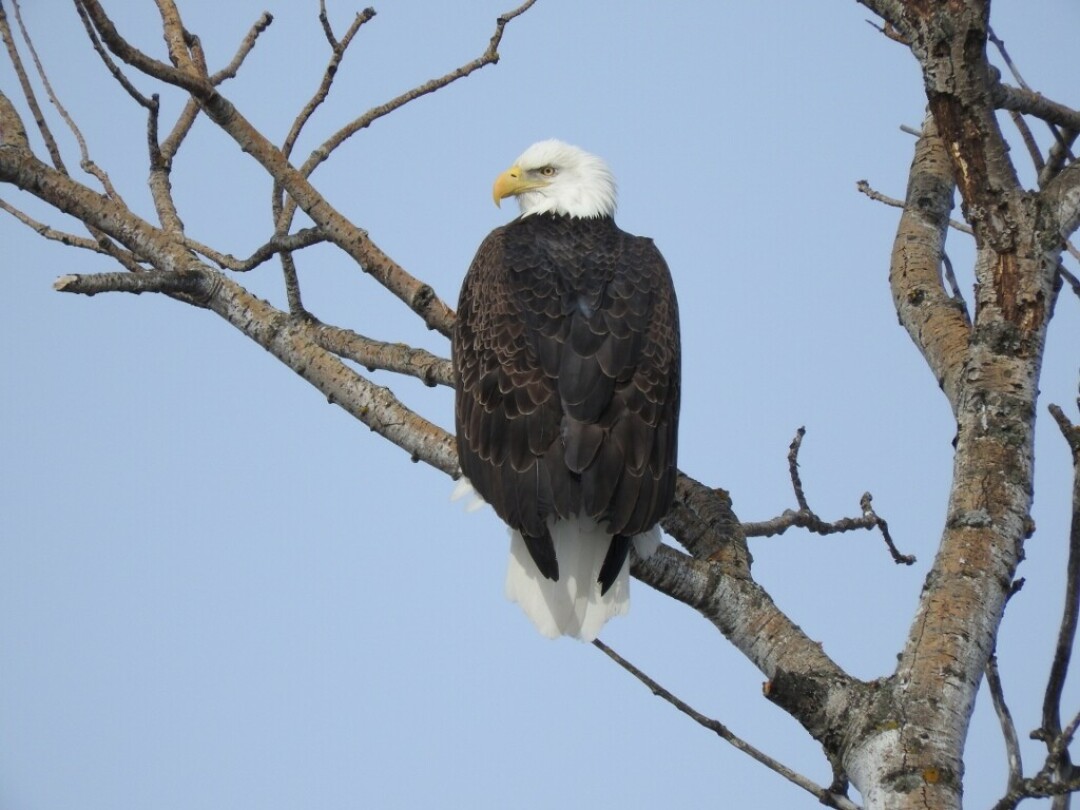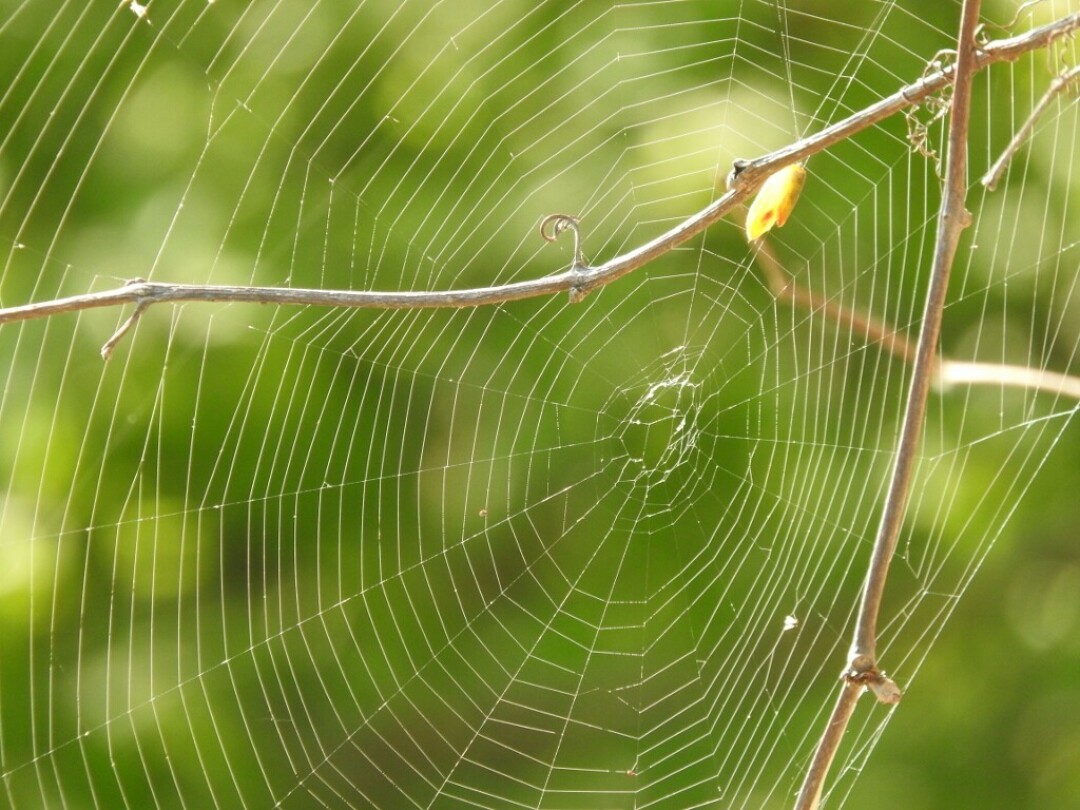News & Articles
Browse all content by date.

A bald eagle perches majestically above a road kill. Photos by Emily Stone.
“Blueberries!” shouted a chorus of young voices, with each kid occupying one section of a grid on my computer screen.
The ubiquitous Zoom calls everyone is talking about have infiltrated my teaching. Many of our local schools have switched to all-virtual classes this winter, and that means presenting our annual MuseumMobile “classroom” visits with everyone on a video call.
So why were we talking about blueberries?
Well, this year is all about adapting to the new order.
Usually when I visit third graders in their classrooms, I bring a stack of plant and animal photos and clothespins. I clip an image to the back of each student’s shirt collar, and then they all play “20 Questions” with each other to try and figure out who is on their back.
Campers and educators might know this game by the title “Who Am I?”
I think it’s great fun, and the kids do, too. The activity consistently comes up when I ask older students what they remember from previous MuseumMobile visits.
So, how could I recreate that fun on Zoom?
To begin, I thought about the reasons we play it in the first place.
One purpose of the game is to distribute a suite of plants and animals in preparation for the next part of the activity. The other purpose of the game is to get students thinking about the characteristics of native Wisconsin plants and animals in a fun way.
Could animal riddles do that, too? I Googled around for inspiration, and found a couple examples with good rhythm. Then I got to work. This one’s my favorite:
Like candy grown on bushes
Blue, but darker than the sky
Bears munch them to mushes
Each year in July
Who am I?

Our world has many webs. From spider webs, to food webs, to the interwebs, they are all incredibly important!
When the students guess the answer during our Virtual MuseumMobile lesson, I write “blueberries” on a piece of paper in a designated circle-spot. At the top of the circle is Sun.
We continue.
Standing by the roadside
My eyes glow green at night
Heart-shaped hooves run and hide
While my tail flashes white
Who am I?
This, of course, is a deer. A deer who just might eat some of those blueberries.
With sharp teeth, sharp eyes, and good nose
I hunt the woods where no one goes.
My family helps and howls together.
Then we sink our teeth into deer-hide leather.
Who am I?
“Wolf!” they shout. That deer had better watch out!
My head is white, my tail is too.
I soar above and inspire you.
I dive for fish to fill my belly
But even road kill’s not too smelly.
Who am I?

Wolves often travel down ski trails on the paths we pack nicely for them.
Soaring, catching fish and eating roadkill. I thought this was a pretty complete description of a bald eagle’s behavior! And since eagles sometimes scavenge, they might even snack on the already-dead carcass of a wolf, or even just steal a bite of his venison.
Do you see where this is going?
After the students solve 12 riddles, we end up with a clock face full of plants and animals, plus Sun, soil and water, which are important non-living components of ecosystems.
In the classroom, we would sit in a circle and I’d get out a ball of string. For now, we just draw lines. The Sun provides energy to plants. Herbivores eat the plants. Carnivores eat the herbivores. Scavengers eat the dead stuff, and worms turn it all back into soil.
We don’t stop at a single, simple food chain, though. As we brainstorm relationships, lines crisscross the circle. Wolves eat blueberries; did you know that?
Finally, it looks like…and as I advance the slide in my presentation, the mess of lines is replaced by a drawing.
“Spider web!” the students exclaim as they understand the metaphor. Many interacting food chains form a food web.
It’s a pretty fun lesson – even when were stuck on the interweb.
Emily Stone is the Naturalist/Education Director at the Cable Natural History Museum. Her award-winning second book, Natural Connections: Dreaming of an Elfin Skimmer, is now available to purchase at cablemuseum.org/books. Or order it from our friends at redberybooks.com to receive free shipping! For more than 50 years, the Cable Natural History Museum has served to connect you to the Northwoods. The Museum is closed, but our Mysteries of the Night exhibit is available online. Connect with us on Facebook, Instagram, YouTube, and cablemuseum.org to keep track of our latest adventures in learning.
| Tweet |


